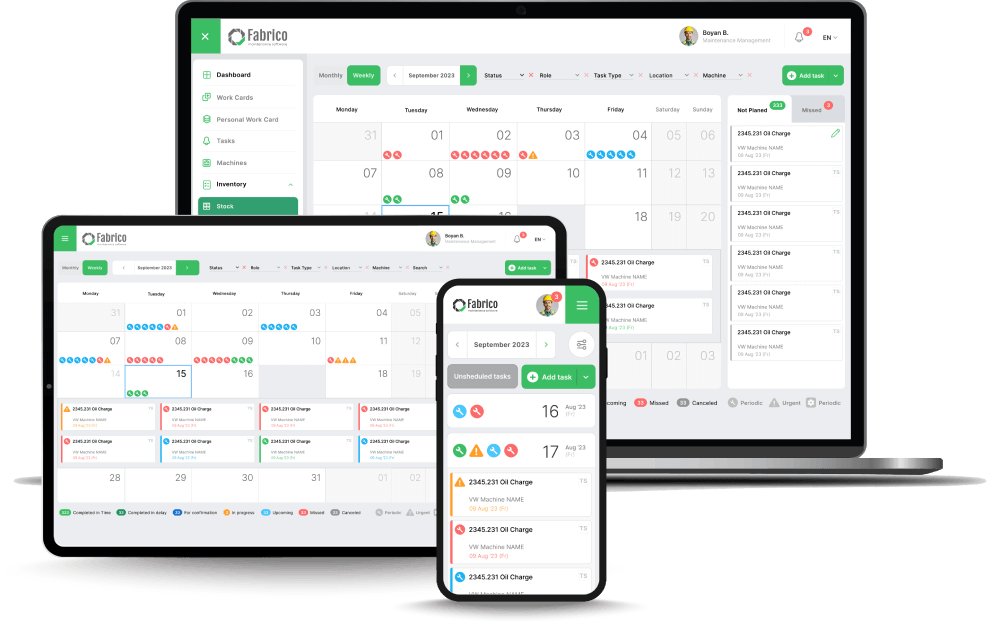Irrespective of which maintenance work order type you are using at your organisation, or even if it’s a combination of several types, most follow a specific maintenance work order process. Below, we outline the work order management process in seven simple steps.
1. Identify a task
The maintenance work order procedure starts when someone identifies a task to be performed. This can come from within the organisation or from someone external but connected to it.
For example, if you are managing a commercial office building with multiple HVAC units and one of them is faulty, a tenant of that building can raise the issue by identifying the problem that needs to be resolved. They can approach a maintenance manager or another relevant person in the organisation who will then create a maintenance request.
2. Create a maintenance request
Creating a maintenance request is the next step in the process. It is important to note that a maintenance request is not the same as a maintenance work order. The request is simply the initiation of the process and it is sent to a maintenance manager to determine if the issue requires maintenance based on several factors. These include the issue's seriousness, the resources available to address it, the costs and spare parts that may be involved in resolving it, the personnel that may need to be reassigned from a current maintenance task to this one, etc.
3. Prioritise work orders
If several maintenance requests come in at the same time, you’ll want to know how to prioritise maintenance work orders. To determine your maintenance work order priorities, you should consider how critical the faults in question are when compared against each other.
You should also look at how much they’re costing your organisation by doing an analysis of their organisation-wide ramifications. It’s also essential to consider the time frame it will take for a fault to be repaired, the costs involved, labour, materials and spare parts, tool availability and other criteria.
Often, the most critical work order will be the one that could potentially put a stop to the organisation’s operations until the fault is repaired. At this stage, maintenance managers create a work order and begin to manage work that's carried out as part of routine maintenance, predictive, corrective or other maintenance types.
4. Schedule a maintenance work order
Once a maintenance request turns into a work order and that work order has been prioritised, it is time to schedule it. Scheduling means determining the time and day on which the work should be carried out. It is also a good idea to have an estimated time frame for how long it could take for the work to be completed.
5. Assign a work order
When a maintenance work order is scheduled, the next step is to assign it to a relevant team member. Since not all team members have the same skills, you will want to ensure that you assign the work order to a specialist who has the skill set to carry out the work order efficiently and effectively.
Sometimes, this may require pulling them away from other duties. This involves a careful balancing act of dealing with a critical issue versus ongoing and general issues that your repair technician would normally be doing. In your work order assignment, you should provide the technician with details about what is expected of them for the task in question.
This may include adding or attaching documentation such as owner’s manuals, instructions and guidelines, a step-by-step checklist, spare parts to be used during the process, etc.
6. Maintenance work order completion
After the work order has been assigned to a relevant team member, it will be completed. This often entails a requirement for the technician in question to complete certain documentation to ensure that the task details are fully documented. This can enable the next person working on the job to better understand what was done before so that they can pick up where the first technician left off.
7. Review the work order
The final step in terms of how to make a work order for maintenance involves reviewing the details of the work order. This is carried out by the manager who scheduled and assigned the work order in the first place.
They will aim to ensure that the work was carried out, that the checklist was completed and that the necessary documentation by the technician is accurate and complete. They will also be able to use this information to add to a database of work orders to measure important maintenance metrics for later use and decision-making purposes.







